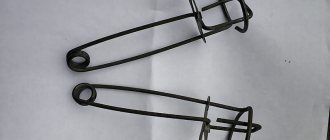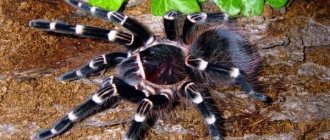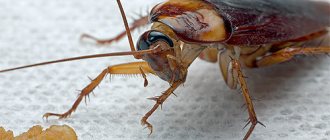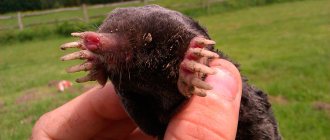What is a wormhole
Let's start with the fact that this animal does not really like to look out into the white light (if you can say that about it).
The fact is that the mole is blind due to his lifestyle. Its habitat is the upper layers of soil. There he feels quite comfortable and cozy. Before asking how deep the mole's hole is, you need to find out why he needs it. After all, such a “structure” depends on goal setting. Nature does not like empty movements. In any case, the wormhole proves precisely this principle. The animal devotes almost all its time to its work on “underground construction”. He debugs and improves it. A wormhole is a whole system of corridors and rooms, each of which is created for its own purpose.
There are passages, a latrine, a nest, and a warehouse. Of course, all terms should be placed in quotation marks. However, they carry a practical load very similar to that which we put into the corresponding names. For example, a latrine is used by an animal as a “toilet room.” Moreover, in other places the animal does not fulfill this natural need.
Let's start not with the house, but with the “appearance”. Scientists have found that the animal has an unusual coat. Its fur grows straight. This is designed so that it does not interfere with his ability to change the direction of movement in narrow passages. The wool lays quite calmly both forward and backward. But, due to constant friction, the fur coat quickly deteriorates.
The mole might just be bald. Nature arranges it in such a way that it sheds up to four times a year. It is very difficult for predators to hunt underground inhabitants. It is known that they are able to run along their passages at a speed of more than twenty-five kilometers per minute! Agree, it's very fast. By the way, such high-speed movement also has a negative effect on the fur coat.
Ways to fight
Not all methods of pest control can be called humane; moreover, some methods of getting rid of animals can pose a danger to people and other inhabitants of the estate. Let's figure out how to deal with moles in your summer cottage and not harm yourself and your pets.
Having decided to destroy the blind with the help of pesticides, it is important to use drugs specially produced for this purpose, as well as strictly follow the attached instructions, observe the dosage and use protective equipment. Manufacturers offer the most effective way to remove moles from your garden plot using poisonous drugs available on the market in a large assortment. According to reviews from summer residents, proven pesticides will help you get rid of moles on your property forever.
Stop-Mole is available in tablet form. The drug is easy to use. Two or three tablets are placed in the hole and the entrance hole is sealed. After contact with moist soil, a reaction begins, the active toxic substance fumigates and fills the tunnel space. The animal dies.
Mole poison “Stop-Mole”
“Green House Antikrot” , a food aromatic bait containing the toxic substance bromadialon, which affects blood clotting. After eating such poison, the mole dies within a few days.
Calcium carbide from moles
Some summer residents use calcium carbide . The substance is placed in freshly dug passages and the hole is sealed. When interacting with moisture, a poisonous gas is released that destroys pests.
You cannot poison moles using intestinal poisons if there are pets walking around the dacha that could eat the animal.
Traditional methods
If the use of chemicals is unacceptable, mole control is carried out using folk remedies. Having studied the advice of experienced fighters against country pests, we will find the best way to reliably get rid of moles in the garden using folk remedies and devices made with our own hands.
Repellents and plants
The simplest and most humane way is to control the pest with the help of repellent, strong-smelling substances. These include:
Since the animal has a highly developed sense of smell, the animal will not visit places where rags soaked in one of these products or mothballs will be laid out. The disadvantage of this method is that it gives a temporary effect, and besides, the realization that foul-smelling substances are buried throughout the area does not add joy.
There is another way to effectively deal with a pesky animal. It is necessary to plant the area with plants that the mole cannot stand. This:
Marigolds are sown around the entire perimeter of the area; bulbous ones can be used locally by planting them along the contour of the bed. Garlic is left in a permanent place, it grows over the years and not a single mole will pass this barrier. The described method, by the way, is also the most beautiful.
Wind turbines
A less aesthetic, but effective folk method of getting rid of pests in the garden is the installation of wind turbines. They are made in various configurations, but the main task is to produce a sound when rotating, which moles perceive as danger. The disadvantage of this method is that the device only works in windy weather, and if the area is quiet, the method is not suitable at all.
Sound and electronic repellers
The most effective remedy that will help get rid of a mole in the countryside can be made with your own hands. To do this, you will need metal rods or pieces of reinforcement 1 - 1.5 m long and beer cans. The rods are driven in as the digger moves, and a tin can is attached to the tip. The sound of a can hitting a metal rod penetrates deep into the earth and scares away the pest. The downside is that the area with such decorations looks unattractive.
What to do if you are tormented by moles at your dacha? You can correct the situation by using industrial repellers.
“Tornado OZB.01” , a device with a built-in sound emitter, compact, resembles a country lantern. It runs on batteries and covers an area of ten acres.
Electronic repeller "Antikrot" . Protects against moles, mole crickets and shrews. Vibration occurs at different frequencies, which eliminates the habituation of pests.
The mole and snake repeller “YOCHOMI” is powered by solar panels, the device vibrates and emits infrasound, and automatically changes the oscillation frequency. The disadvantage is the high price (from 3,500 rubles). Enough for 7 acres.
Repeller "EcoSniper LS-997MR" , effective for 1500 m², with a built-in pendulum that enhances vibrations.
Sonic mole repeller
Mousetraps and molecrackers
Fighting moles with mousetraps and molebreakers is an economical method, but it cannot be called humane. In addition, it requires constant monitoring of installed traps and their release from animal corpses. Mole traps cope with moles and shrews, while mouse traps are suitable only for small rodents.
Using reeds
Another folk remedy will help in getting rid of annoying animals in the country. For this you will need reeds. It is cut off on both sides and several pieces are inserted into the molehill for at least half a meter. In windy weather, a howling effect is created, which scares away animals from the area.
When harvesting reeds, in order not to add to your troubles, do not bring its seeds to your plot.
Rotten herring
Knowing that moles do not like them, some summer residents bury rotten herring or its offal and head in the tunnels made by the pest in the garden plot. This method is ineffective, since the animal clogs the foul-smelling place and makes a passage around it. Sometimes the pest pushes pieces of rotten meat to the surface, causing even more trouble for summer residents.
Rotten herring from a mole
Crossbow
Summer residents go to great lengths when they fight moles. Fighting a pest with a self-made crossbow is puzzling. The pipe, sealed on one side, is filled with gunpowder and shot. Through a thin hole, a nichrome wire is used to connect the motion sensor to the gunpowder. After the sensor is triggered, the battery is turned on, heating the wire, and the crossbow fires. The method is labor-intensive, requires special skills and is a one-time procedure.
Flooding of canals
You can get rid of earth moles by flooding canals. As soon as you find a fresh molehill, you need to dig a hole and pump a large amount of water into it. Pest control will be effective only if the animals have appeared on the site recently and have not had time to dig many tunnels.
Sulfur smoke
When we fight moles on our own, we use different methods. Another effective remedy is filling the channels with sulfur smoke. The checker is placed in a newly appeared molehill and set on fire. The hole is covered. Toxic smoke quickly spreads through the tunnels and kills pests. What is dangerous about using this method on a site is that it can destroy not only the pest, but also the plants.
Sulfur bombs are used in early spring before planting, strictly observing safety precautions.
Pass current
Craftsmen have come up with another way to lime moles in the country. This is done using electric current. Two metal pins are dug in at a meter distance from each other in the place of greatest pest activity. Then a voltage of 80 V is supplied using a transformer. This is a labor-intensive and dangerous method.
Home Defenders
The best way to get rid of a mole in the garden is to call on your pets for help. Dachshunds and terriers are especially successful in catching diggers, and moles perceive the barking of dogs as a threat and leave the area. If a cat lives in the country, let it out for night and morning hunting. In a week or two there will be no trace left of the moles.
Pets catch moles
Common or European mole
A real mole, which is often encountered by gardeners, gardeners, and wildlife lovers.
- The body size of the mole does not exceed 20 cm, the average dimensions are 15 cm. The body is oblong.
- The weight of an adult is about 120 g, the tail is no more than 4 cm long.
- The muzzle is elongated, the nose with splayed nostrils is clearly visible. There is nothing else that stands out on the head.
- Mole eyes with small slits without movable eyelids. The mole's vision is weak, but its sense of smell is well developed.
- The fur is soft, thick, short, black. The color on the abdomen is lighter. The tone changes somewhat depending on the time of year. In winter, the wool is the fluffiest and most beautiful. The animal sheds about 4 times a year. A photo of the mole can be seen below.
The mole animal has one striking distinctive feature - spade-shaped forelimbs with long claws. With them the animal digs the ground, screws itself into the passage, and pushes the soil out with its hind legs. In places where holes are dug, mounds are formed - molehills.
The mating season of the common mole begins in early spring and lasts until the end of May. Around June-July, the younger generation appears. There are about 9 moles in the litter. The female carries the cubs for about 30 days. The European mole gives birth only once per season. Carefully takes care of babies for about 2 months.
We suggest you read: The best remedy for bedbugs
The earth mole only appears outside to mate; this happens at night. The rest of his time is spent underground. Digs numerous passages and labyrinths. This type of mole feeds on earthworms, insects, pupae, caterpillars, and less commonly, slugs, lizards, mice, snakes, and frogs.
Reproduction
Sometimes moles break their solitary lifestyle to mate. Immediately after its completion, the male leaves the female. He does not help build nests for his young and does not participate in their upbringing. During the breeding season, females show increased aggressiveness towards individuals of their own sex.
Usually there is no more than one brood per year. The gestation period varies depending on the species from 30 (common moles) to 42 days (Eastern moles).
A new generation is born in nests. A brood consists of two to seven individuals. Initially they are naked and hairless, but after two weeks they become overgrown with fur. At three weeks of age, their eyes open. In the first month, babies' nutrition consists only of mother's milk. On the 35th day, moles leave their native nest and begin to look for a free area for themselves. During this period, many of them die under the wheels of cars or from predators.
Why does a mole build a hole?
Let's immediately determine that there are many animals with this name. We're talking about everyone for now. They, of course, have their own characteristics. Only in this part of the article will we talk about a certain “middle mole”. Let's consider the functions of his home. There he spends almost his entire life. Note that the depth of a mole's hole is determined by the tasks for which it is dug.
In general, it consists of several floors. The first lies ten to twenty-five centimeters from the soil surface. This floor consists of a system of passages. The animal needs them to look for food. After all, it is precisely “hiding” in this layer of soil. The mole descends below for other purposes. He creates the second (in depth) floor in order to breed offspring and preserve his reserves.
Interesting Facts
Despite their “banality” and familiarity, moles are a unique family that is interesting to both scientists and ordinary people.
People may not know everything about moles, but they have collected a number of facts about them:
- In construction, the mole uses not only its paws, but also its nose.
- In one minute the animal digs up to 30 cm of soil.
- Sometimes moles eat their dead or weakened relatives.
- The speed of movement of the animal through the tunnel is 25 m/s.
- There is a bone in the reproductive organ of male moles.
- Moles are not actually blind; their eyes are simply covered with skin to prevent dirt from falling into them.
- Moles, along with snakes, are never found in Ireland.
- Even if the animal is moved to another place, it somehow still finds its way home.
- The average length of a mole hole is 200 meters.
- Ordinary moles are not found in Australia, and their ecological niche is occupied by marsupial moles - animals with orange fur.
- If you start feeding the animal artificially, it will stop moving and will soon die from obesity.
- Golden moles (golden moles) living in South Africa are not moles.
The mole is a very peculiar animal that brings both harm and benefit to agriculture. Its lifestyle is typical for an underground animal, although it has its own characteristics. There are more than 40 species in the Mole family, many of which are found in Russia.
Caucasian mole
Caucasian mole
is one of the varieties of ordinary moles. Found in the Caucasus and Turkey. Externally, the mole looks like a European one, but is smaller in size.
- The average body length of a mole is about 14 cm. Females are smaller than males.
- Weight no more than 90 g.
- Tail length is about 3 cm.
- The eyes are covered with skin and are hardly noticeable.
- The mole's nose stands out well on its elongated muzzle.
- The coat is thick, black, and becomes brown in the summer.
The Caucasian mole digs holes at a depth of 5-20 cm, leaving loose soil on the surface. In hot weather it goes deeper by 50-100 cm. It also builds a nest there. The main camera is placed under a tree or in a shady area. Numerous passages extend from the mole's nest.
Reproduction of moles begins at the end of March; cubs appear in April. They grow up extremely quickly. At the age of 1 month they reach the size of an adult mole, and at 60 days of their existence they leave the family to build their own nest.
Reproduction
The breeding process occurs every year, and the timing of gestation for each species is different. The Siberian mole is characterized by the fact that it has a period when the embryo freezes for some period and stops developing. That's why:
- European moles mate in March-April and offspring are born after 35-40 days. Cubs are born blind and naked. Each litter contains from 3 to 9 moles, which weigh no more than 3 grams. Some adults (up to 20%) can become pregnant a second time. After a month and a half, the young leave the nest.
- Siberian moles mate in the summer, but the female gives birth to young the following spring. In this case, the female’s pregnancy lasts almost 270 days. Each litter contains from 3 to 6 moles. Already in June they become adults and leave the nest. In this case, females become sexually mature only the next year, and males only in the second year.
- The blind mole mates in February/March, when there is still snow on the ground. After a month, from 1 to 5 moles are born. After a month they become independent and leave the nest.
- The Caucasian mole also mates in February, and mole babies are born in March. After 40 days, no more than 3 individuals will already become adults and independent.
Despite low fertility and reproduction only once a year, the number of moles on the site is increasing at a rapid pace. Due to the fact that moles live in the ground, no predators can reach them.
The lifespan of moles depends on their species, although we can safely say that their average lifespan ranges from 4 to 5 years.
Like a mole digs the ground
Engineers, as well as biologists, were interested in how a small animal manages to build such a complex structure. It should be noted that the depth of the mole hole sometimes reaches four meters. For comparison, its dimensions are about twenty centimeters. Do you feel the difference? Its structure can be compared to our high-rise buildings or mines.
The animal uses almost all parts of its body for construction. It is equipped with naturally powerful front paws with claws. They are what frighten casual witnesses of his rare appearance on the surface. The animal uses them to scrape away layers of soil. They just need to go somewhere. In order to remove excess “building material”, the animal makes molehills.
We suggest you read: The best drug for Giardia
These are small exits to the surface through which it pushes soil. This is done with the head. When the corridor becomes too long, the animal clogs up the used hole and digs a new one. And a person sees piles of earth on the surface - the results of the mole’s work. You just can't find the entrance there. The animal hides it cunningly enough so as not to be in danger, and to save its offspring.
Siberian or Altai mole
A variety of common mole. It differs from its relatives in its large size. Lives in Siberia and Mongolia.
- The mole's body size is about 20 cm. Females are slightly smaller.
- The length of the tail does not exceed 4 cm.
- The eyes are round, small, and have a movable eyelid.
- The muzzle is elongated, with a well-defined nose.
- The ears are small, almost invisible.
- The mole's shovel-shaped front paws have long claws; the hind paws are similar to rat limbs.
- The coat is dark black, but can be smoky, yellow, or brown.
- The Siberian mole weighs from 100 to 225 g.
A distinctive feature of this type of mole is its long pregnancy. Fertilization occurs in the summer, but the embryo freezes until spring. Cubs appear in April-May. Pregnancy lasts 9 months. There are about 11 cubs in the litter.
The main food is earthworms, followed by beetle larvae, pupae, and small insects. A Siberian mole can easily gnaw on a mouse, lizard, sick rat, mole cricket, snake, snake, or frog. There are cases of cannibalism. The winner takes possession of the victim's possessions, marking his territory with a special secret.
What does a mole eat?
It is clear that with such a specific lifestyle, the animal must have a special diet. And they eat everything they meet along the way. These are mainly plant parts. Roots, tubers, acorns - all this ends up in their stomachs (and not only). Researchers of this interesting animal say that its reserves can be impressive.
For example, the mole rat makes several storerooms in which up to twenty kilograms of food can be found. Agree, one can envy the animal’s hard work. In addition, this factor explains to what depth the mole digs. Stocks are being made for the winter. Therefore, they should not “disappear”, in particular from the cold. This means that in those areas where there is more frost, the animal hides deeper and vice versa.
Models
Despite the fact that it is very difficult to sew a mole fur coat, there is a huge variety of them on the product market.
Here you can find:
- classic cross-cut fur coat;
- short autolady;
- model with a hood;
- with three-quarter sleeves.
Of course, due to the length, the price varies greatly. And not every fashionista can afford to buy a long mole fur coat.
You can often find a cross-cut mole fur coat, and this is understandable. Because The skin of this animal is very small, so sewing it into a whole product will be very problematic.
But the cross-cut fur coat will be sewn not from a single piece of fabric, but from individual skins. This results in a product with even horizontal stripes.
Also, not only fur coats are made from mole skins, but also jackets, vests and hats. Because The animal's fur is quite cold, but very velvety and soft; it is often used to make collars.
Star-nosed
Star-nosed mole
The second name for the mole is star-nosed. It differs from its relatives by its unusual nose. The stigma consists of 22 soft processes - tentacles. Thanks to them, the animal gropes for food. The rest of the body structure is similar to the European mole.
- The mole's body is elongated, about 22 cm long.
- The tail is long - 8 cm.
- The coat is thick, soft, silky, black and brown in color.
- There are no auricles.
- Small eyes are not covered by skin.
The starfish swims and dives well. The mole feeds on crustaceans, slugs, earthworms, larvae, and mollusks. In addition to the underground, aquatic lifestyle, it leads a terrestrial one. It can build nests in rotten stumps, hollows of old trees, under leaves. Prefers swampy areas, soil with high humidity. Often found near rivers, lakes, and swamps in the United States.
Mole and vegetable garden
People involved in agriculture often complain about animals. The fact is that mole rats often settle next to areas cultivated by humans. Considering how much he can “steal” from the garden, some are starting to worry. It must be said that the negative attitude towards moles is not entirely justified.
We suggest you read: Blisters on the body itch like bites: acne treatment, what to do
Well, let them eat some potatoes or carrots. At the same time, they also diversify their diet with larvae and other parasites, which can spoil much more of the harvest. This conclusion was reached by experts who found out how a mole digs a hole. This very first floor is intended for feeding. Where the animal lays it, no parasites remain.
Summarizing
There is no clear and universal answer on how to properly remove a mole from a garden plot. Each gardener decides for himself: leave the mole on the site and scare it away from the beds, but allow the pests to be destroyed in other parts of the garden, or destroy it.
Most gardeners consider moles to be beneficial, and in some countries they are listed in the Red Book and it is considered a violation to kill them.
Those who have fought moles know that defeating a pest invasion is a difficult, long task, and often fails. It is unlikely that it will be possible to drive away the animal forever. A mole will not leave an area rich in food and worms. From time to time it may go deeper, leave the beds and move to another part of the garden, but as soon as the influence of the repellent factors stops, it will return.
Marsupial mole
Marsupial mole
Representative of Australia, about whose life and behavior very little is known. Body size is about 20 cm, weight up to 90 g. A small tail is 2 cm. Body color is white, pink, brown. The wool is soft, thick, extremely beautiful.
The marsupial mole lives underground, but does not build a huge number of passages or tunnels; most of them are immediately buried behind itself. It seems that the animal is swimming in the sand. Leads a solitary lifestyle and finds the female by smell during the mating period.
Periodically appears on the surface, especially after rain. The mole builds its burrow at a depth of 1 m. Its favorite food is beetle larvae; it also feeds on lizards and plant seeds. It can live no more than 17 hours without food.
Moles come in different sizes, differ somewhat in appearance, but lead an identical lifestyle. They are useful animals - they loosen the soil, destroy harmful insects, but with great activity they cause harm to agriculture, undermining the root system of plants in the process of digging tunnels. For this, farmers are fighting moles, trying to preserve their crops from the underground pest.
What kind of life do they lead?
Moles are almost always underground. All individuals are equally active both at night and during the day. Over the course of a day, animals experience several three- to four-hour stages of increased mobility, and in the intervals between them the animals rest in their nests.
Moles are loners
They live in their own individual plot, which they bravely defend from enemies to the best of their ability. Each of them has its own tunnel system, but sometimes they intersect
The animals still try not to collide with each other and get food in various secluded corners.
If a mole dies, the neighbors quickly notice it, and the fastest one wins the free area. Sometimes it is shared by several animals.
Having captured a certain territory, moles mark the tunnels laid there with a powerfully smelling secretion secreted by the preputial glands. Both males and females have this smell. If this “aroma” is not present, other individuals will conquer the area.
Burrow length
People, considering the performance achieved by this small builder, focus on the depth of the structure. But there is a more interesting factor that may capture the imagination. Agree, many people can bury themselves four meters into the ground in a straight line. But building tunnels whose length is many times greater than your size is a huge job.
So, this figure can reach up to three hundred and sixty meters (for a mole rat). And it is still unknown whether this is a record. The fact is that many species of moles have not been thoroughly studied. Science knows only general information about them. No one measured the length and depth of their holes. These include, for example, shrews.
DIY repellent devices
You can make a structure yourself that will protect your area from moles. To do this you will need:
- plastic bottle;
- metal rod;
- part of a water pipe.
It is easy to make such a device.
- Hammer the pipe into the ground so that its edge is below the level at which the passages were dug.
- Place the pin on top of the part of the pipe that is driven into the ground. Secure the pin with a plug.
- Make a hole in the bottom of the bottle with a hot nail. Its diameter must be larger than the diameter of the pin.
- On the surface of the bottle, make 4 U-shaped slits on different sides and bend the plastic. Place the structure on a pin secured in a piece of pipe.
Homemade repeller diagram
The wind will spin the bottle in a circle like a weather vane, and the empty pipe will generate resonance and spread it throughout the soil, including dug passages. Moles are afraid of such noises and leave the territory without having time to master it sufficiently so that later there is a desire to return back. On a plot of 6 acres, 2-3 such scarecrows will be enough. Based on this, you can calculate the quantity if your area is larger. For example, 30 acres will require 10 such structures. But their cheapness and ease of manufacture are justified.
Science and moles
Science fiction fans know that the unusual animal was noticed by physicists. Those, in the course of studying the multidimensionality of our world, came to certain conclusions. It turns out that space is nonlinear. It can curl up. And its parts are connected by passages reminiscent of mole holes. It has not yet been possible to take a photo of such a phenomenon.
And it’s difficult to prove its existence. So far, only science fiction writers and some advanced scientists operating on the edge of the official system use the concept of “wormholes.” And it came to the researchers’ minds precisely in view of the secrecy of the lifestyle of this animal. He keeps his secrets from the curious, sometimes not very deeply, and sometimes far from
Try and find his home!











